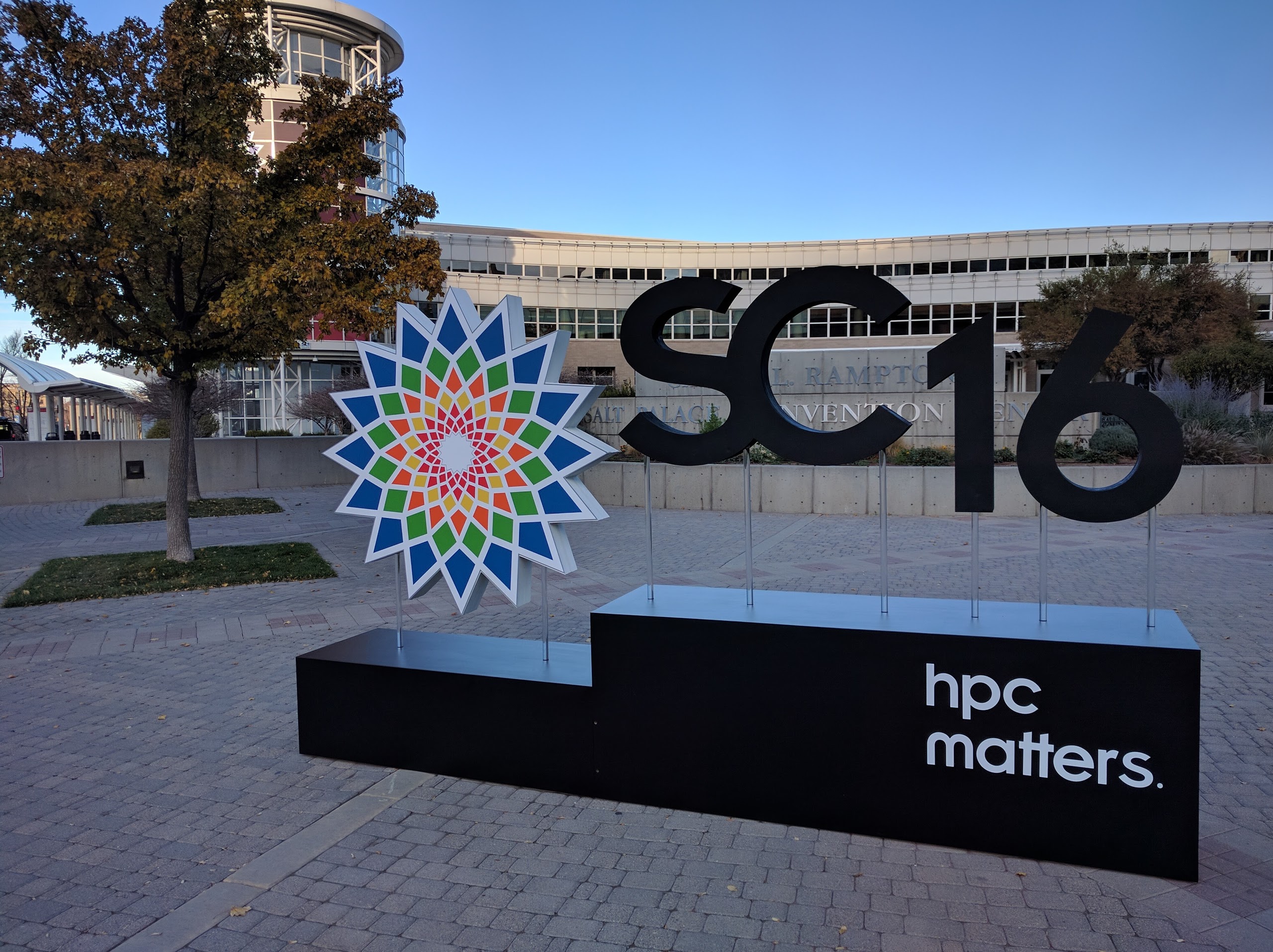-
The deployment of an application on the Open Science Grid (OSG)
A few months ago a biology group at the University of Utah contacted the Center for High-Performance Computing (CHPC). Their goal was to predict the MS/MS spectra for a set of molecules (#:230,737). In a first step, I installed the CFM-ID code and its dependencies (vide infra). On our Ember cluster (Intel(R) Xeon(R) CPU X5660…
-
GPU Tech Conference
Quick entry. My colleague Cesar and I from USC High-Performance Computing attended the GPU Technology Conference in San Jose, California yesterday (www.gputechconf.com). I read that 5,000 attended last year and Nvidia, the conference host, expects a record number this year. The focus was Nvidia’s GPU (Graphical Processing Unit) technology and applications. Deep Learning: If I…
-
Super Computing 2016

In November 2016 members of the ACI-REF consortium had the opportunity to attend Super Computing 2016 (SC16). Below are some of their experiences.
-
HTC computing enables knee research
High-throughput computing plays pivotal role in knee biomechanics research
-
Three Ways to Productivity
As someone with a lot to do at work (tickets! meetings! reports! documentation! workshops! community-building!), I often consider how I can optimize my work time. Like a good scientist, I try lots of approaches and some of my experiments are more successful than others. This post describes three “success stories” — using a simple technology,…
-
How to gain hybrid MPI-OpenMP code performance without changing a line of code a.k.a. dealing with task affinity

Need for hybrid MPI-OpenMP programs The multi-core era is here and our programming habits need to adjust to it. Most people by now have their codes parallelized using MPI for distributed memory machines, as that era has been upon us for 20 years now. MPI codes can work well on multi-core machines, but, with the…
-
Island Facilitation
Foster’s rule (also known as the island rule or the island effect) is an ecogeographical rule in evolutionary biology stating that members of a species get smaller or bigger depending on the resources available in the environment. Source: https://en.wikipedia.org/wiki/Foster’s_rule Cyberinfrastructure at the University of Hawaii is relatively new and small compared to the other organizations…
-
New Annual Conference – PEARC
The annual XSEDE conference will be changing into a new conference called “Practice and Experience in Advanced Research Computing” or PEARC. The Advancing Research Computing on Campuses (ARCC) best practices workshop, a conference with close ties to ACI-REF, will be co-located with this inaugural PEARC conference, bringing together members of each group in the same time…
-
On Equity and the Long Tail
One of our most common roles as a facilitator is as “teacher” to the researchers whose work we facilitate. It’s a role that not only requires a good set of communication skills, but also a knowledge of what our learners (researchers) already know, what they need to know, and what learning steps are necessary along…
-
On Building a fast R environment
In this article we will describe how to build an R distribution from source using the Intel Compiler Suite. Why? The execution of R code can be significantly sped up when it is built with a decent compiler and relies on fast mathematical libraries (mainly linear algebra). Requirements The installation (vide infra) was performed on…
